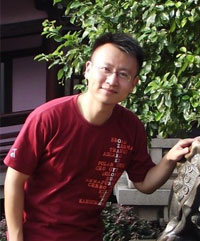Invited Talk: Xiangkun Kong, Nanjing University of Aeronautics and Astronautics
Special session 11: Metamaterials, Metasurfaces, and Their Electromagnetic Applications

Short Bio:
Xiangkun Kong received the Ph.D. degree in communication and information systems from the Nanjing University of Aeronautics and Astronautics (NUAA) in 2015. He has been an associate professor in NUAA since his promotion in July 2015. He used to work at the University of St. Andrews in the UK as an academic visitor supported by China Scholarship Council. His main research interests include the electromagnetic properties of frequency selective surface, metamaterial and metasurface application, plasma photonic crystal, and computational electromagnetics. He has published more than 100 papers in different academic journals, including Applied Physics Letters, Optics Express, and Transactions on Antennas and Propagation, and has been cited 1600 times.
Title: Broad Band Metamaterial Absorber and Reconfigurable Frequency Selective Rasorber Designs for Radar Stealth
Abstract:
The design of future aircraft puts higher and higher requirements on radar stealth requirements. This work gives some recent reports on broadband microwave absorber or reconfigurable frequency selective rasorber design. Two kinds of broadband metamaterial radar absorbers are given to achieve microsatellite stealth. Among them, the multi-layer ultra-wideband absorber uses a high-resistance surface to design a coupling-type structure, which is suitable for the microsatellite body and the back of the solar cell array. The broadband absorber based on light transmitted hybrid structure uses high-transmittance indium tin oxide (ITO) to design the wave-absorbing structure. Furthermore, some reconfigurable frequency selective rasorbers are also designed to realize EM waves' asymmetric transmission and energy isolation. Finally, a new kind of water-based reconfigurable FSR with a thermally tunable absorption band and an RCS reduction of patch antenna using 3‑bit coding linear polarization conversion elements are also discussed. |

